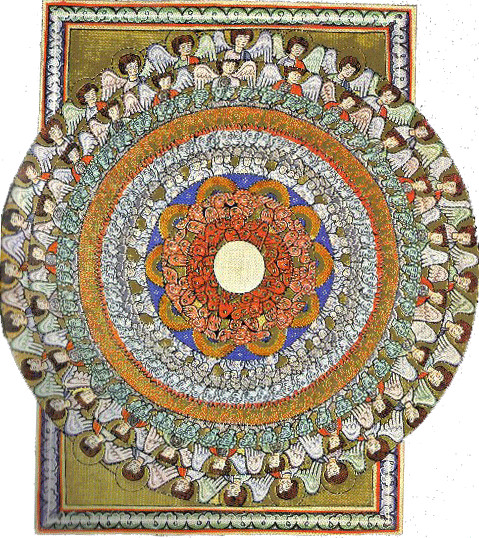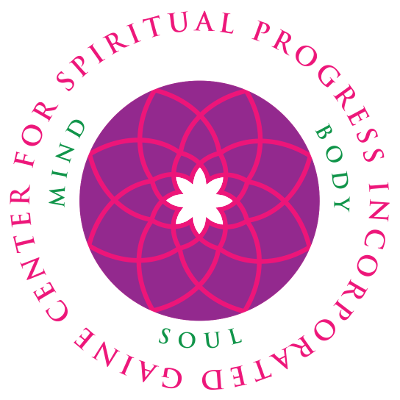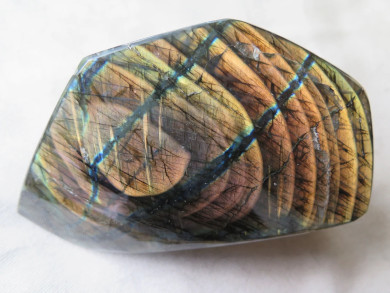Article from Issue #41 (January 7, 2022)
Hildegard of Bingen: The Nun Who Loved the Earth - The Gemstone Saint
by Cynthia Overweg

The earth sustains humanity. It must not be injured; it must not be destroyed.
Crystal healing has its roots mainly with Hildegard. It is thought that Bishop Marbod of Renee's was the inspiration for her work with crystal gemstones as he compiled a book about them 60 years previous to her start. Hildegard of Bingen was no ordinary nun.
The article below is about her divine work in general. Here is just a bit more about her ideology of gemstones. Hildebrand believed that gemstones were intrinsically of the Divine and hostile towards the darkness. She says that each gemstone has fire and dampness. The darkness shuns gemstones as the dark fallen remember their beauty before he fell from the Creator's grace and so many were created through fire which is the Fallen's punishment. In her work she states The 12 secret stones mentioned in Revelation to John are Diamond, Agate, Amethyst, Ruby, Chrysophase, Chalcedony, Prase, Jasper, Chrysolite, Topaz, Carnelian. So it can be said that work with gemstones has its roots in Medieval Christianity and mysticism. Most cultures have used gemstones for healing over thousand of years.
By Cynthia Overweg
Hildegard of Bingen was no ordinary nun. The beloved Benedictine abbess stood at the epicenter of medieval Europe as a visionary and mystic. Famous for her visions of celestial wonders and vivid descriptions of an ordered and divine universe, she was a spiritual beacon to thousands of people who flocked to her monastery, seeking her advice and counsel.
So great was Hildegard’s spiritual stature that her petitioners included kings and queens, bishops and popes. But it was her passion for the natural world and our place in it that makes Hildegard particularly relevant today. She had a profound reverence for nature and placed great importance on our relationship with the earth. Her ideas transcend religious tradition to embrace a grand and inclusive vision: “Every creature is a glittering, glistening mirror of divinity,” she wrote.
Born in 1098 in Bermersheim, Germany, in the lush Rhineland, Hildegard was known as the Sibyl of the Rhine. In addition to her mysticism, she was also a prolific writer, musician, composer, theologian, playwright, teacher, herbalist, and healer. Scholars refer to her as a polymath—a person with extensive knowledge and training in several disciplines. She saw the earth as a living organism endowed with the same vital power that animates all life forms. It was a central theme in her life and work. “The earth sustains humanity. It must not be injured; it must not be destroyed,” she declared.
In Hildegard’s worldview, a beam of sunlight, the fragrance of a flower, or the graceful movement of a swan were all participants in the holy chorus of creation. To be out of sync with the beauty and fecundity of nature is to deny the divine force which enlivens body and soul. She called this force viriditas, using the Latin word for “greenness.” She envisioned this “greening power” as a force that continually nourishes the earth and all its creatures. For Hildegard, the color green symbolized nature’s vibrancy, ripening, and eternal becoming. She made it clear that we are not separate from nature, but an intimate part of it. When she observed the wonder and splendor of nature, she saw a divine underpinning which sustained not only the earth, but the cosmos. “Creation is the song of God,” she said.
Hildegard certainly wasn’t the first mystic or philosopher to venerate nature or to speak of a mysterious energy that underpins and sustains the visible world. Similar ideas can be found in the Bhagavad Gita, the Upanishads, and the Tibetan Buddhist worldview. Take, for example, the following statement by Krishna in the Bhagavad Gita: “I am the taste of pure water and the radiance of the sun and moon. I am the sweet fragrance in the earth and the radiance of fire; I am the life in every creature.”
Now compare Hildegard’s expression of the same idea, revealed to her, she said, by the “voice of the Living Light,” which spoke to her of the mystery which animates creation: “I am the breeze that nurtures all things green. I encourage blossoms to flourish with ripening fruits. I adorn all the earth. I am the rain coming from the dew that causes the grass to laugh with the joy of life.”
The similarity between Krishna’s statements and Hildegard’s is striking, but she could not have known about the Bhagavad Gita or any other Sanskrit text. Hildegard was a cloistered nun in rural medieval Germany, and she would have had no access to translations of Asian scriptures, had they even been available in her time.
Hildegard’s insights came through her own observations and inner experience. She had tapped into the same unifying principle that mystics of all traditions have spoken or written about. While Hildegard was often quite conventional when she gave theological interpretations, in her purely mystical work, there are parallels with Eastern philosophy.
“The Earth sweats geminating power from its very pores,” she told her nuns. She asked them to pay close attention to the rhythms of nature, because it holds the secret to our physical well-being and to the vitality of an inner life. She urged them to become partners with the natural world, saying: “Humankind is called to co-create, so that we might cultivate the earthly, and thereby create the heavenly.” While Hildegard saw the necessity of working cooperatively with nature to create heaven on earth, our modern world of climate change, rising sea levels, failing ecosystems, and extinctions of species has put the earth and all of its creatures in peril. But few in leadership positions seem to be listening to prophets of old—or to the latest science.
In recent years, there has been a resurgence of interest in Hildegard’s life and work. She has been the subject of dozens of books, documentaries, and the 2009 award-winning feature film Vision, which tells the story of her ferocious battle to overcome the opposition of a misogynist abbot to her founding of a convent. But with the help of a wealthy female patron and the approval of the bishop of Mainz, Hildegard succeeded in building a new center for her nuns, and gave them a level of freedom and creativity unheard of in her day. In 2012, after centuries of dragging its feet, the Catholic church under Pope Benedict XVI canonized Hildegard a saint and gave her the title “Doctor of the Church.”
Born into a family of nobility, Hildegard did not choose the religious life of her own accord. It was thrust upon her. The youngest of ten children, she was given by her parents as a “tithe” to the church when she was only eight years old. Painful as it must have been to relinquish custody of your child to be raised by nuns or monks, it was customary in the Middle Ages for members of the nobility to “give” a son or a daughter to the church, and by extension to God.
One can only imagine the emotional trauma this caused for families, no matter how devoted they were to their faith. A beautiful and shy little girl with a highly sensitive nature, Hildegard must have been frightened and disoriented when her parents brought her to live at the Disibodenberg monastery. The monastery now lies in ruins on a hilltop near the Nahe river, south of the Rhine. Because Hildegard once lived there, it attracts spiritual pilgrims and tourists from all over the world.
Once she arrived at the monastery, Hildegard was placed in the care of Jutta von Sponheim, a deeply religious woman and a family friend. Jutta was a well-regarded anchoress. Unlike a typical nun, an anchoress in medieval times went through a ritual of a mock burial, performed by a bishop, to mark her absolute “deadness” to the world. Anchoresses also took a rather extreme vow of perpetual enclosure in a small structure attached to a monastery or church. Jutta had mystical tendencies of her own and had insisted on being enclosed so that she could focus her attention on her interior life. She became Hildegard’s guardian, teacher, and confidant.
It wasn’t long before Hildegard confided to Jutta that from the age of three she had been seeing visions of a divine light. “I saw such a great light that my soul quaked. I have always seen this vision in my soul,” she wrote when describing her childhood experience. She had learned when quite young that others did not see visions, and that rather than be ridiculed, it was better to keep them a secret. But she entrusted her secret to Jutta, who seems to have understood Hildegard’s emerging mysticism, though it is unknown to what extent Jutta supported or encouraged her young protégé. What is known is that sometime between the ages of fourteen and sixteen, Hildegard formally became a nun under the convent leadership of Jutta.
Hildegard had reached the age when she would have been required to enter an arranged marriage had she not already been committed to the church by her parents. The roles of women were strictly prescribed in the Middle Ages: it was either marriage and children or life in a convent. To escape an arranged marriage, some young women preferred to enter a convent, where at least they could receive an education and have some measure of independence, as well as the opportunity to become leaders within their communities. When Hildegard took the veil, she had no choice in the matter, but always maintained that she did so willingly, believing it was her spiritual calling. In later years, however, she criticized the practice of tithing children to the religious life, saying they were too young and innocent to be required to make such a commitment.
For more than three decades after becoming a nun, Hildegard was a hard-working, though reclusive woman. But her blazing intelligence, spiritual maturity, creativity, and leadership skills were admired and respected by her peers. When Jutta died in 1136, Hildegard was elected abbess of the convent. She was thirty-eight. Up to that point, she had been suppressing her mystical visions since childhood, fearing disapproval, ridicule, and even accusations of heresy. By 1141, when she was forty-three, Hildegard’s health was breaking down. She was often sick and unable to work.
Then one day Hildegard had a vision that challenged her to finally break her silence. She put it his way: “In the forty-third year of my passing journey, when I clung to a heavenly vision with fear and trembling, I saw a very great light from which a heavenly voice spoke to me and said: ‘O weak person, ashes of ashes, dust of dust, speak and write what you see and hear. Because you are timid about speaking and unskilled in writing, speak and write these things as a listener understanding the words of a teacher. Give others a clear account of what you see with your inner eye, and what you hear with your inner ear. Your testimony will help them come to know me.’”
But Hildegard’s anxiety crippled her. “Although I heard and saw wondrous and mysterious things, I refused to write them down because of self-doubt and my fear of the opinion of others,” she wrote. Weary and frightened, she gathered the strength to begin recording her visions. Once she started to write, her health greatly improved.
Knowing that she needed feedback and support, Hildegard consulted the monk Volmar, who was assigned as confessor to her convent. Volmar was a kind and gracious man, who had enormous respect for Hildegard and her spiritual wisdom. Since his Latin was more classical and polished than Hildegard’s, he volunteered to be her secretary and write down what she told him. It was a collaboration that lasted until Volmar’s death more than thirty years later. The nun and the monk became close friends and confidants to each other. Volmar’s encouragement helped Hildegard develop the confidence she needed to find her own voice.
With Volmar as her secretary, Hildegard began to write Scivias, or “Know the Ways,” her first book about her visions and her theological interpretations of them. Once some of the book had been written, Hildegard wrote to the influential French abbot Bernard of Clairvaux, a Cistercian monk and close advisor to the pope, for his opinion of her visions and her work. Hildegard knew that Bernard was devoted to the Virgin Mary and was sympathetic to inward seeking and mystical experience.
It wasn’t long before a delegation of bishops was sent to the monastery to interrogate her and obtain a copy of what she was writing. She now had come face to face with her greatest fear: rejection and ridicule by ecclesiastical authority. But she maintained her poise during long and forceful questioning that went on for a couple of days. The bishops left skeptical, but without condemning her.
Hildegard’s manuscript was brought to Pope Eugenius III, who was pleased with it, and in 1148, he wrote to Hildegard giving her permission to write and publish her visions. By then she was fifty, a late start for any writer, but before she died in 1179 at the age of eighty-one, Hildegard had written five major books, composed seventy-seven sacred songs, written the first musical morality play, answered hundreds of letters from petitioners, publicly condemned church corruption and the philandering of priests, gone on an unprecedented speaking tour, and created a secret language for her nuns, all while managing two convents and facilitating her charges’ spiritual growth. Her accomplishments would have been remarkable in any age, but for a twelfth-century woman, she was one of a kind.
When a monk asked Hildegard how her visions came to her, she replied: “A fiery light of exceeding brilliance came and permeated my whole brain, and inflamed my whole heart and my whole breast, not like a burning, but like a warming flame, as the sun warms anything its rays touch.” When she was asked if she was awake or in a trance when the visions came, she said, “The visions I see I do not perceive by the eyes of the body, or by the ears of the outer self, or in hidden places; I receive them while awake, and seeing with a pure mind and the eyes and ears of the inner self, in open places, as God wills it.”
Hildegard’s claim of being lucid and awake when experiencing her visions in what she called the “Living Light” and the “shadow of the Living Light,” is rare if not unique. She suggested that although she experienced an altered state of consciousness, it was not spiritual bliss or a trancelike state. She was, as it were, accessing another dimension with “inner” sight and “inner” hearing that enabled her to encounter celestial beings and mysteries at the root of existence, while remaining conscious of her surroundings. Some have proposed that Hildegard may have suffered from migraines, and that the bright light she saw was an aura produced from an intense headache. But there is no way of knowing if she did suffer from migraines. Even if she did, they cannot account for the complexity and originality of her visions, or for her claim to feel the presence of the Living Light within her and near her.
The visions described in Scivias and her other books were “illuminated,” or painted as images by monks and nuns with artistic abilities, under Hildegard’s supervision. Part of what makes her appealing to contemporary readers is her unusual visual imagery. Many of her visionary images have been likened to mandalas, symbolic representations of the cosmos. Themes included the cosmic egg; angels and celestial beings celebrating the creation of the universe; humanity as a microcosm of the macrocosm; and what has been referred to as Hildegard’s “cosmic tree.” They also resemble mandalas in that they depict a circle inside a square to illustrate a mystery which the viewer is invited to enter.
Another important aspect of Hildegard’s visions was her experience of spiritual wisdom as a feminine attribute. Her description of the feminine divine principle, personified as Wisdom, was sometimes provocative, but always powerful. “O Holy Wisdom, soaring Power, encompass us with wings unfurled, and carry us, encircling all, above, below, and through the world,” Hildegard wrote. “Praise her! She watches over all people and all things in heaven and earth. She is incomprehensible to mortals. She is with all and in all; great is her mystery.”
But when it came to the feminine face of divinity, Hildegard was careful not to cross a theological line. Her fame did not give her license to contradict dogma, and she did not or could not support the ordination of women. Even if she had wanted to, it would have been heretical and therefore dangerous. Yet Hildegard managed in her own way to liberate herself and her nuns from the “curse” of Eve (a vindictive punishment described in the Genesis myth which still affects Western civilization) by celebrating feminine wisdom and power within the voluntary confinement of a religious life. She emphasized the predestination of both Mary and Christ. Both, she said, were at the intersection of eternity and time, and both were redemptive instruments of divine love. She was also optimistic about the possibility of men and women becoming fully realized human beings, writing: “Humanity, take a good look at yourself. Inside, you’ve got heaven and earth, and all of creation. You’re a world—everything is hidden in you.”
One of Hildegard’s most enduring symbols is a tree, which she used as a metaphor for the growth of the soul. “The soul is in the body, just like the sap is in the tree. Understanding grows in the soul, just like the greening of branches and the leaves of the tree. Therefore O person, you who think your understanding is good, understand what you are in your soul.”
Hildegard’s teaching can sometimes sound a bit like a Zen koan. She was adept at pointing to nature in order to help us better understand ourselves and the planet which has been given to us. She saw a spiritual kinship between us and the earth: “The soul is a breath of the living spirit, and with excellent sensitivity, permeates the entire body to give it life. Just so, the breath of the air makes the earth fruitful. Thus the air is the soul of the earth, moistening it, greening it.” For Hildegard, the earth was sacred.


 Anti-Aging Gemstones for the Fountain of Youth
Anti-Aging Gemstones for the Fountain of Youth The Effect of Crystal Harmonizers
The Effect of Crystal Harmonizers Sacred Seven: The Crystal of Higher Consciousness
Sacred Seven: The Crystal of Higher Consciousness